J A Nyakatura
Reverse-engineering the locomotion of a stem amniote
Nyakatura, J A; Melo, K; Horvat, T; Karakasiliotis, K; Allen, V R; Andikfar, A; Andrada, E; Arnold, P; Lauströer, J; Hutchinson, J R; Fischer, M S; Ijspeert, A J
Authors
K Melo
T Horvat
K Karakasiliotis
V R Allen
A Andikfar
E Andrada
P Arnold
J Lauströer
J R Hutchinson
M S Fischer
A J Ijspeert
Abstract
Reconstructing the locomotion of extinct vertebrates offers insights into their palaeobiology and helps to conceptualize major transitions in vertebrate evolution. However, estimating the locomotor behaviour of a fossil species remains a challenge because of the limited information preserved and the lack of a direct correspondence between form and function. The evolution of advanced locomotion on land—that is, locomotion that is more erect, balanced and mechanically power-saving than is assumed of anamniote early tetrapods—has previously been linked to the terrestrialization and diversification of amniote lineages. To our knowledge, no reconstructions of the locomotor characteristics of stem amniotes based on multiple quantitative methods have previously been attempted: previous methods have relied on anatomical features alone, ambiguous locomotor information preserved in ichnofossils or unspecific modelling of locomotor dynamics. Here we quantitatively examine plausible gaits of the stem amniote Orobates pabsti, a species that is known from a complete body fossil preserved in association with trackways8. We reconstruct likely gaits that match the footprints, and investigate whether Orobates exhibited locomotor characteristics that have previously been linked to the diversification of crown amniotes. Our integrative methodology uses constraints derived from biomechanically relevant metrics, which also apply to extant tetrapods. The framework uses in vivo assessment of locomotor mechanics in four extant species to guide an anatomically informed kinematic simulation of Orobates, as well as dynamic simulations and robotics to filter the parameter space for plausible gaits. The approach was validated using two extant species that have different morphologies, gaits and footprints. Our metrics indicate that Orobates exhibited more advanced locomotion than has previously been assumed for earlier tetrapods, which suggests that advanced terrestrial locomotion preceded the diversification of crown amniotes. We provide an accompanying website for the exploration of the filters that constrain our simulations, which will allow revision of our approach using new data, assumptions or methods.
Citation
Nyakatura, J. A., Melo, K., Horvat, T., Karakasiliotis, K., Allen, V. R., Andikfar, A., Andrada, E., Arnold, P., Lauströer, J., Hutchinson, J. R., Fischer, M. S., & Ijspeert, A. J. (2019). Reverse-engineering the locomotion of a stem amniote. Nature, 565, 351-355. https://doi.org/10.1038/s41586-018-0851-2
| Journal Article Type | Letter |
|---|---|
| Acceptance Date | Dec 11, 2018 |
| Publication Date | Jan 17, 2019 |
| Deposit Date | Jan 19, 2019 |
| Publicly Available Date | Jan 22, 2019 |
| Journal | Nature |
| Print ISSN | 0028-0836 |
| Electronic ISSN | 1476-4687 |
| Publisher | Nature Research |
| Peer Reviewed | Peer Reviewed |
| Volume | 565 |
| Pages | 351-355 |
| DOI | https://doi.org/10.1038/s41586-018-0851-2 |
| Public URL | https://rvc-repository.worktribe.com/output/1383931 |
Files
11894.pdf
(8.3 Mb)
PDF
You might also like
Foot pressure distribution in White Rhinoceroses (Ceratotherium simum) during walking
(2019)
Journal Article
Relating neuromuscular control to functional anatomy of limb muscles in extant archosaurs
(2019)
Journal Article
Downloadable Citations
About RVC Repository
Administrator e-mail: publicationsrepos@rvc.ac.uk
This application uses the following open-source libraries:
SheetJS Community Edition
Apache License Version 2.0 (http://www.apache.org/licenses/)
PDF.js
Apache License Version 2.0 (http://www.apache.org/licenses/)
Font Awesome
SIL OFL 1.1 (http://scripts.sil.org/OFL)
MIT License (http://opensource.org/licenses/mit-license.html)
CC BY 3.0 ( http://creativecommons.org/licenses/by/3.0/)
Powered by Worktribe © 2025
Advanced Search
